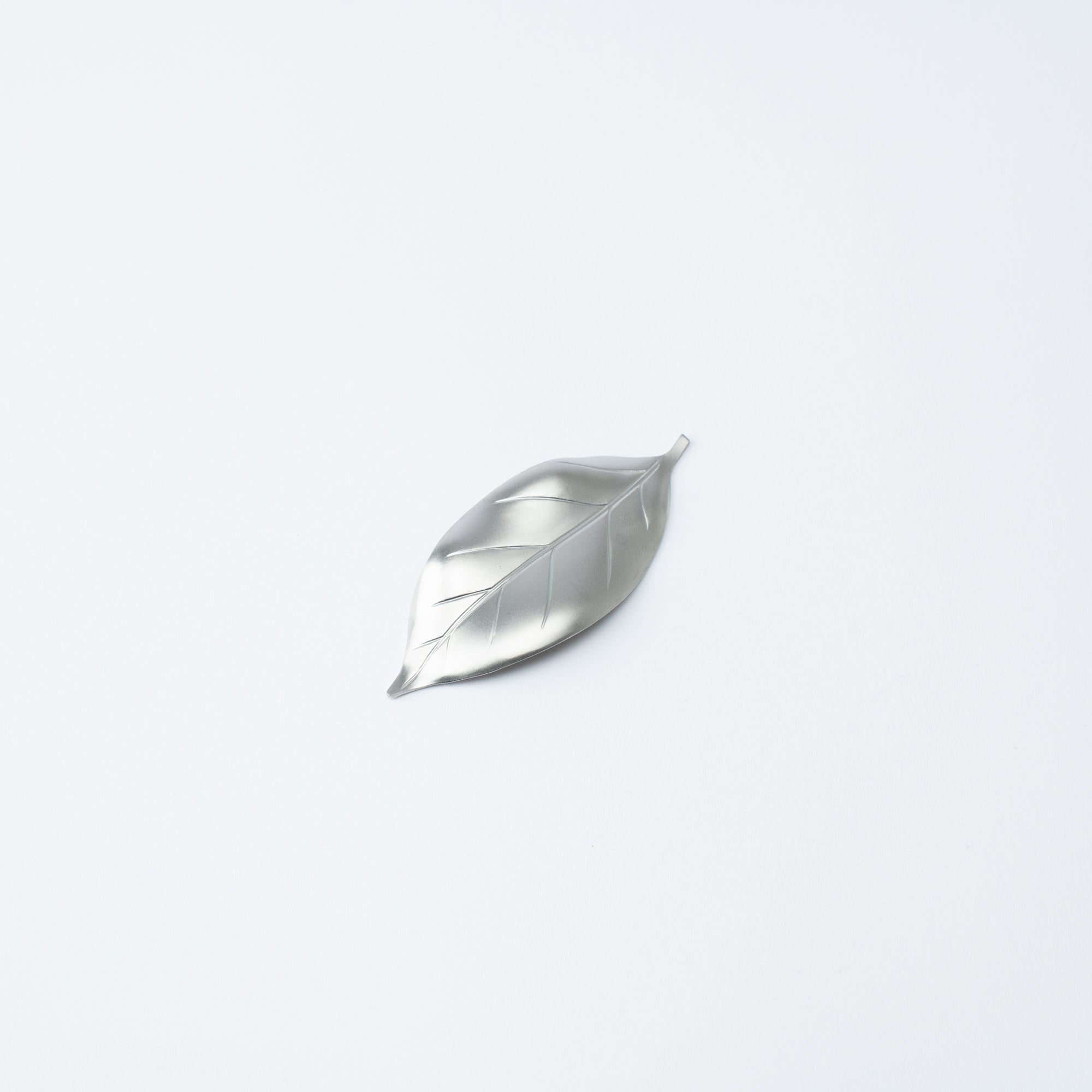
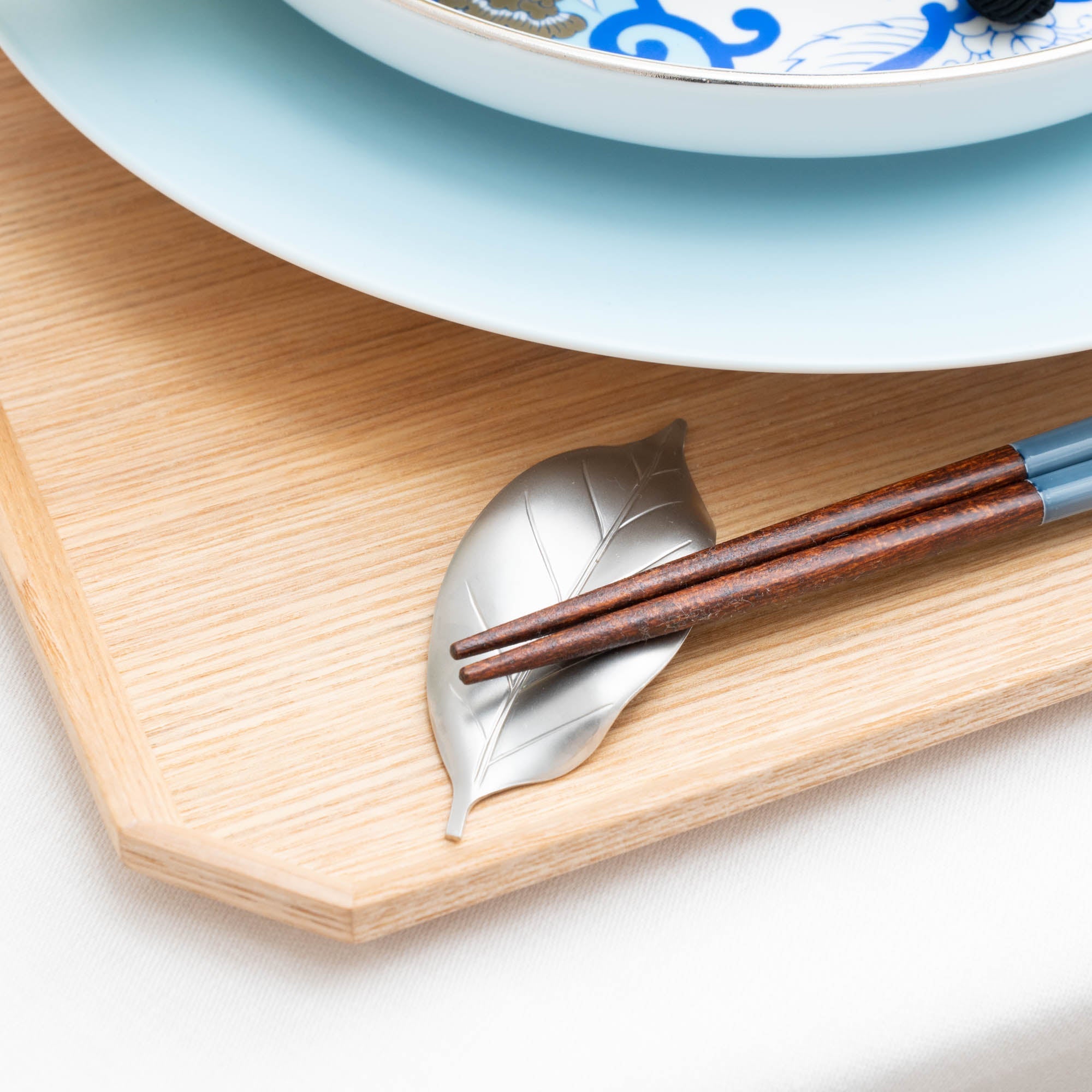
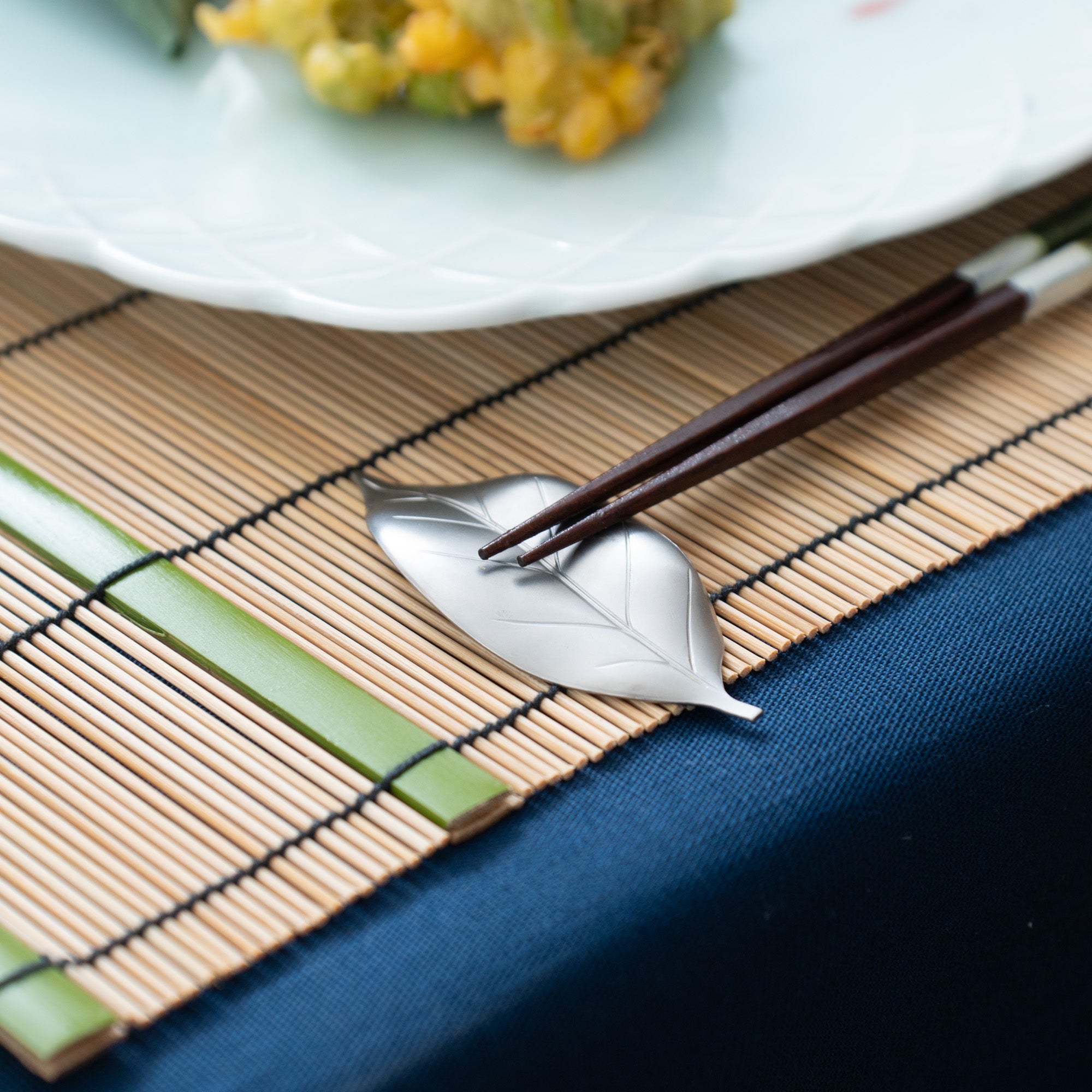
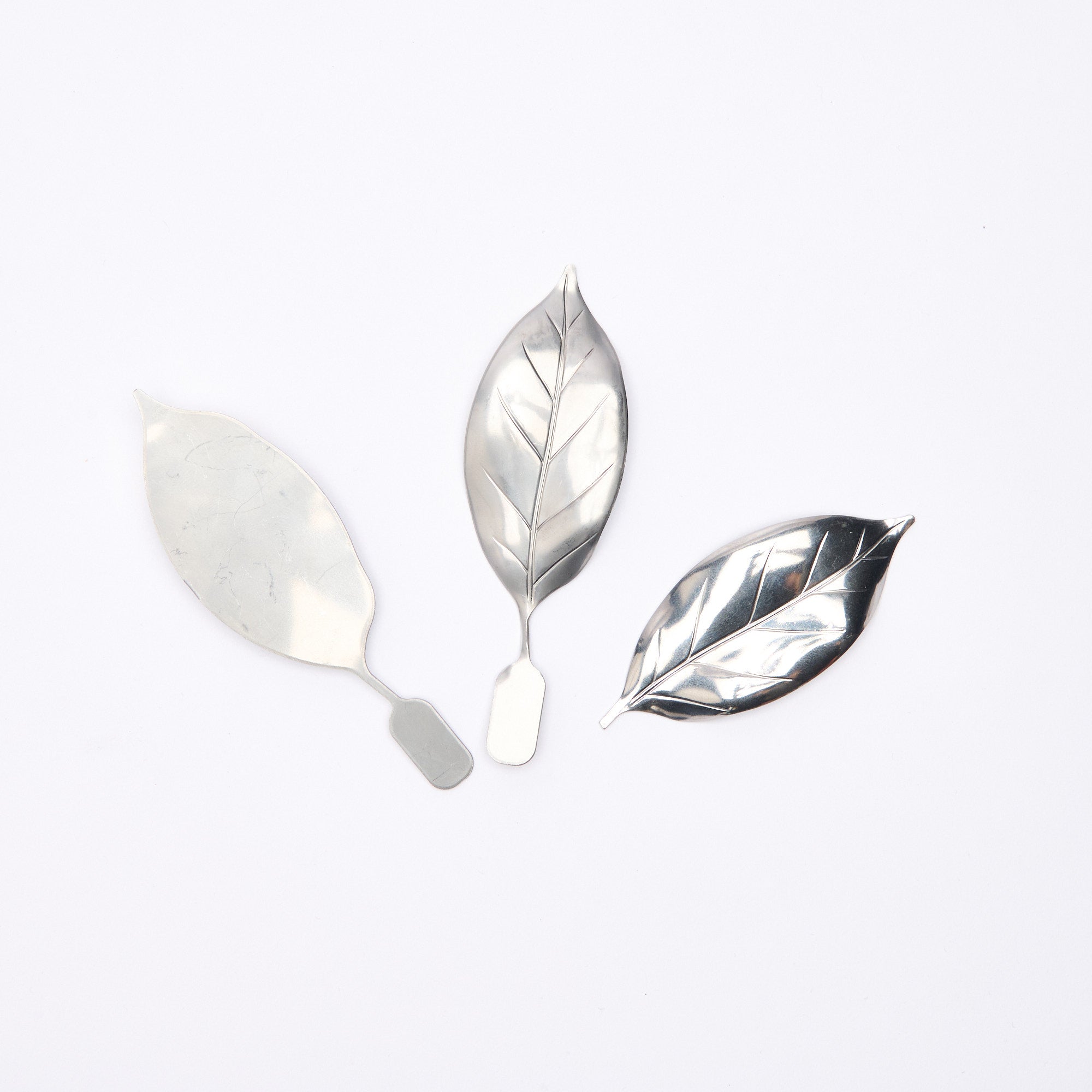
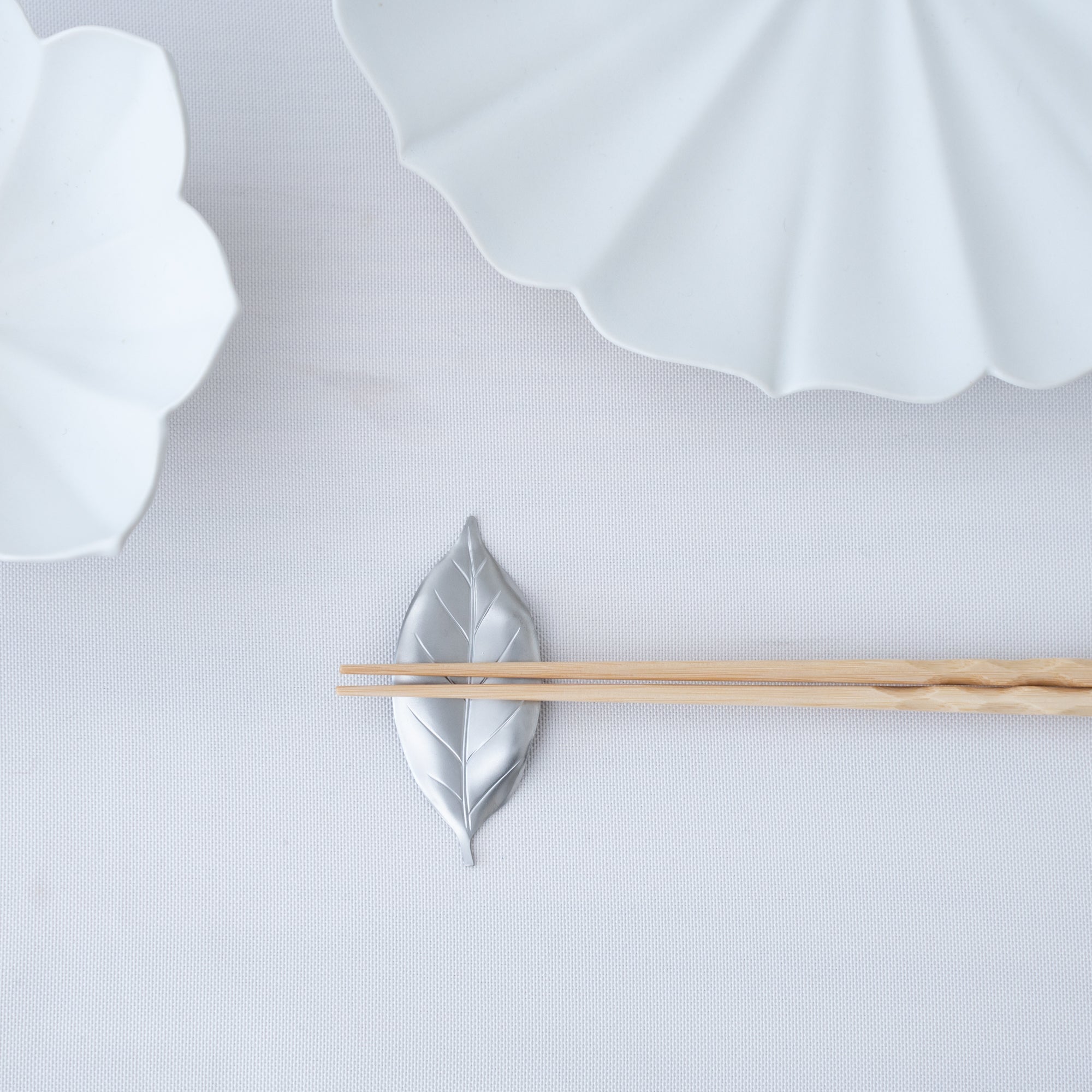
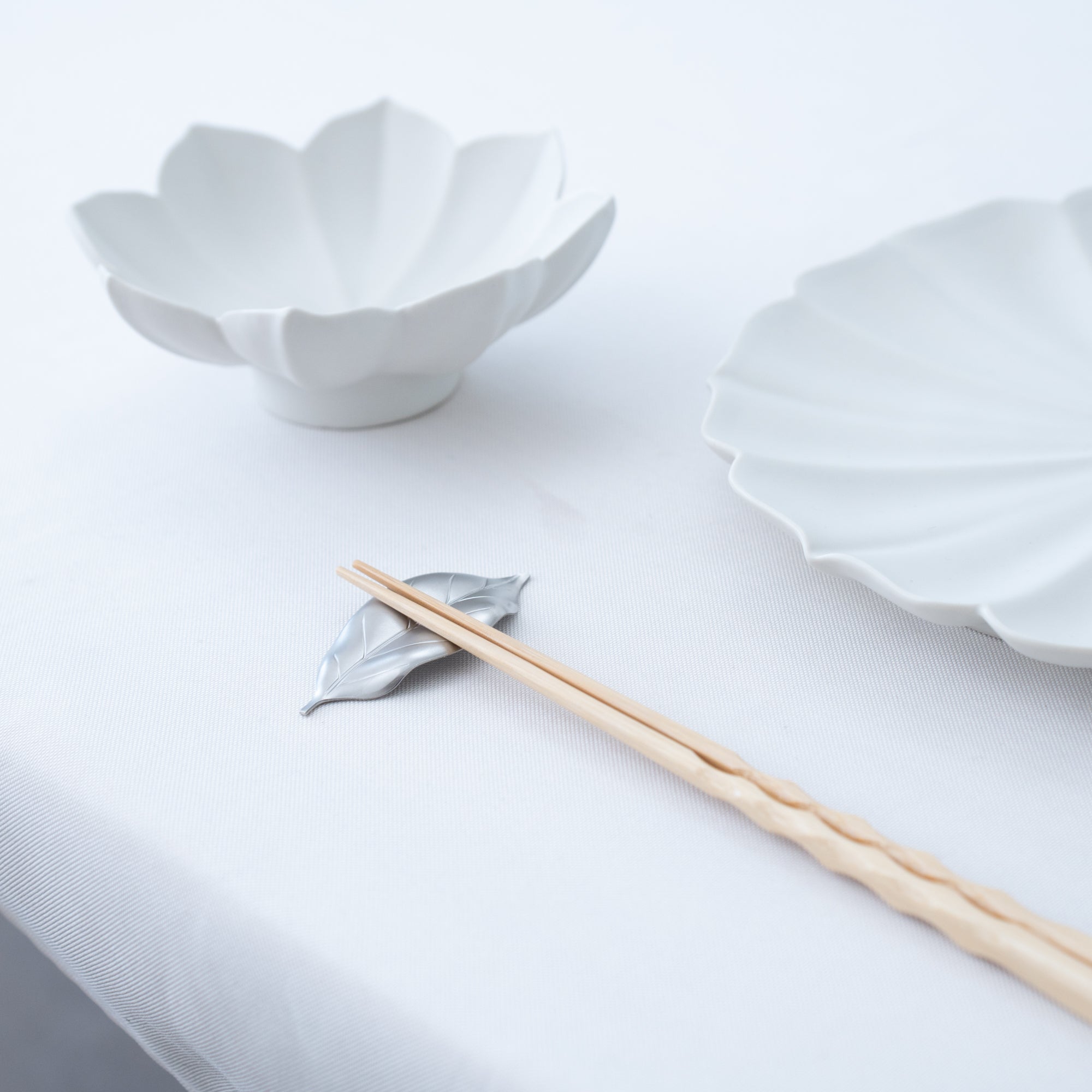
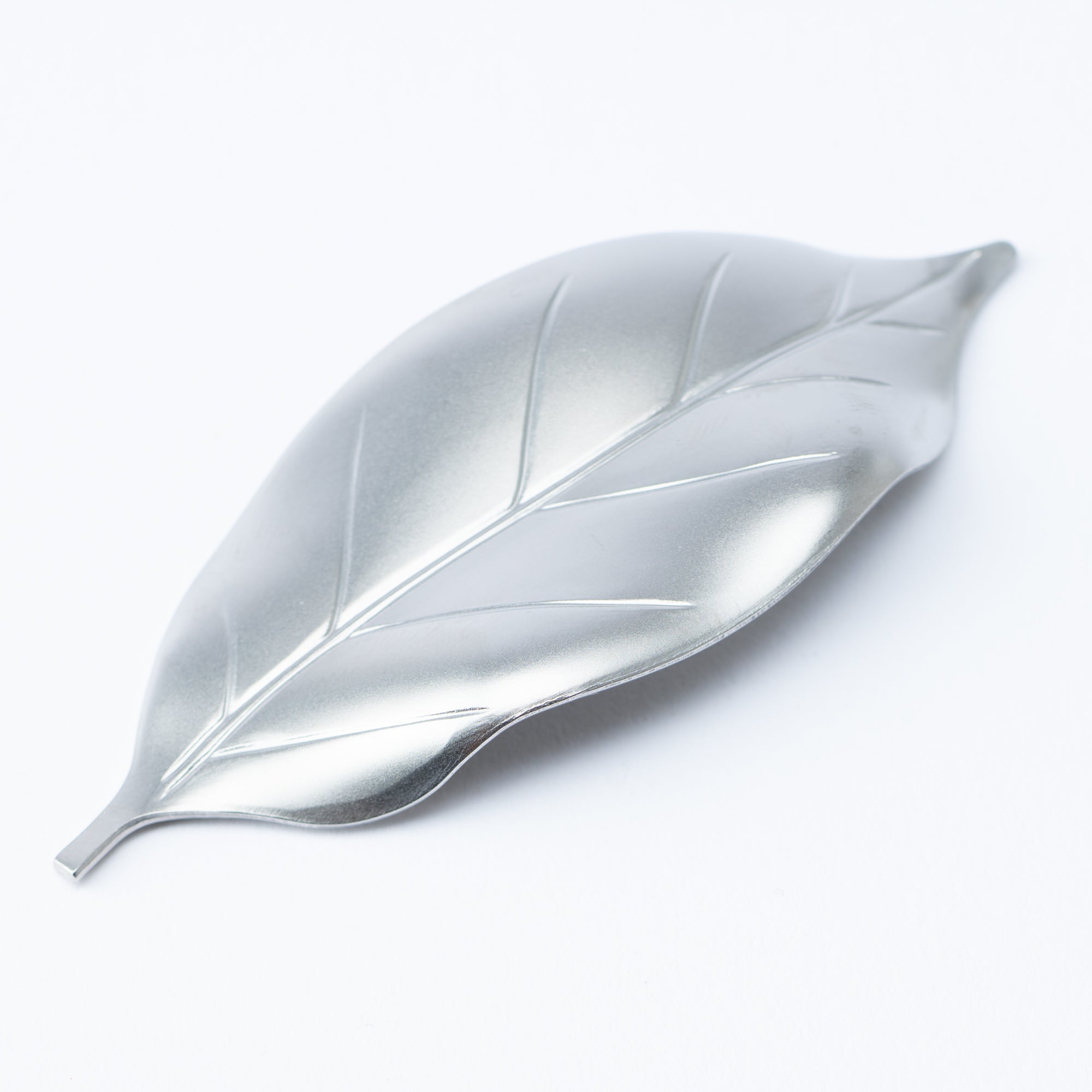
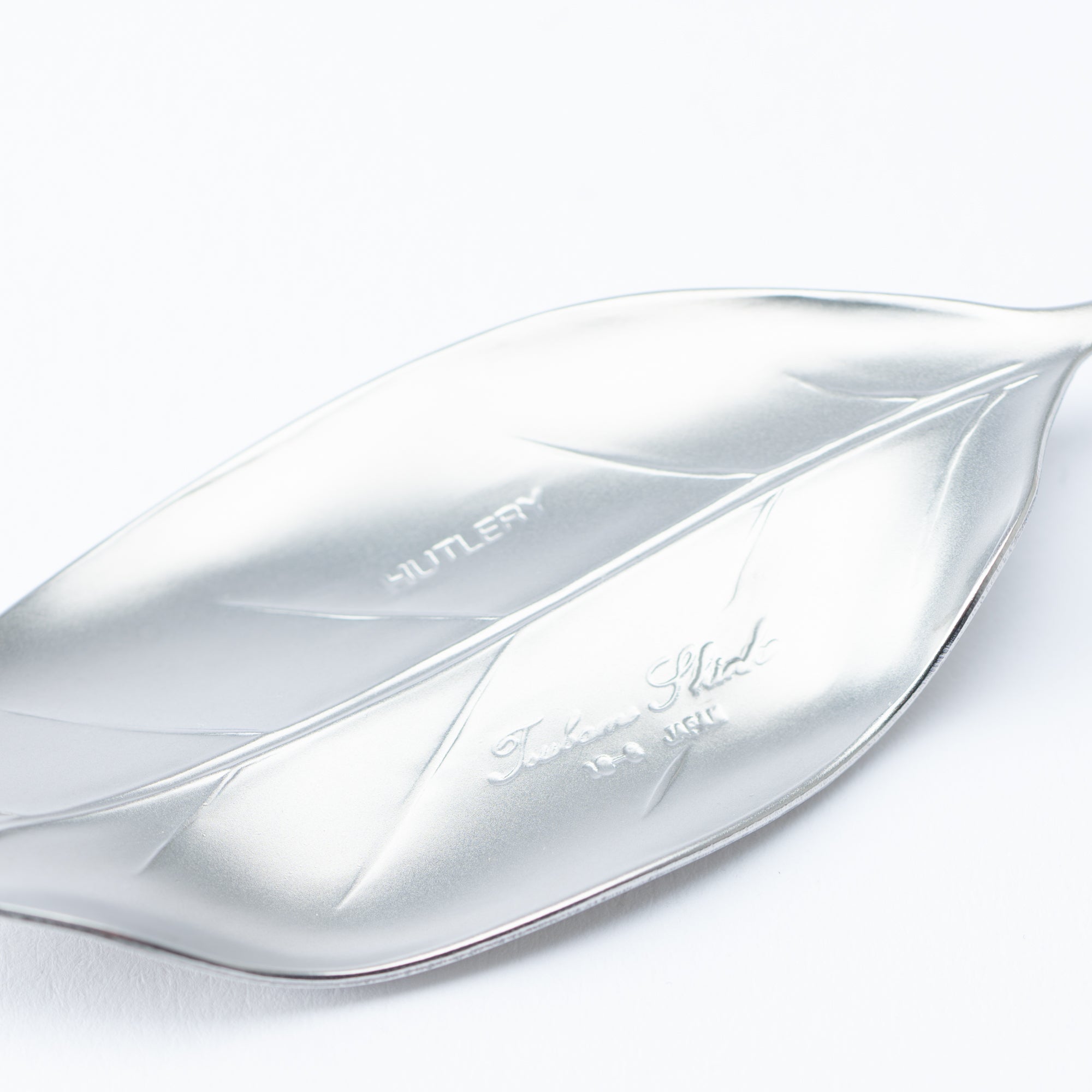
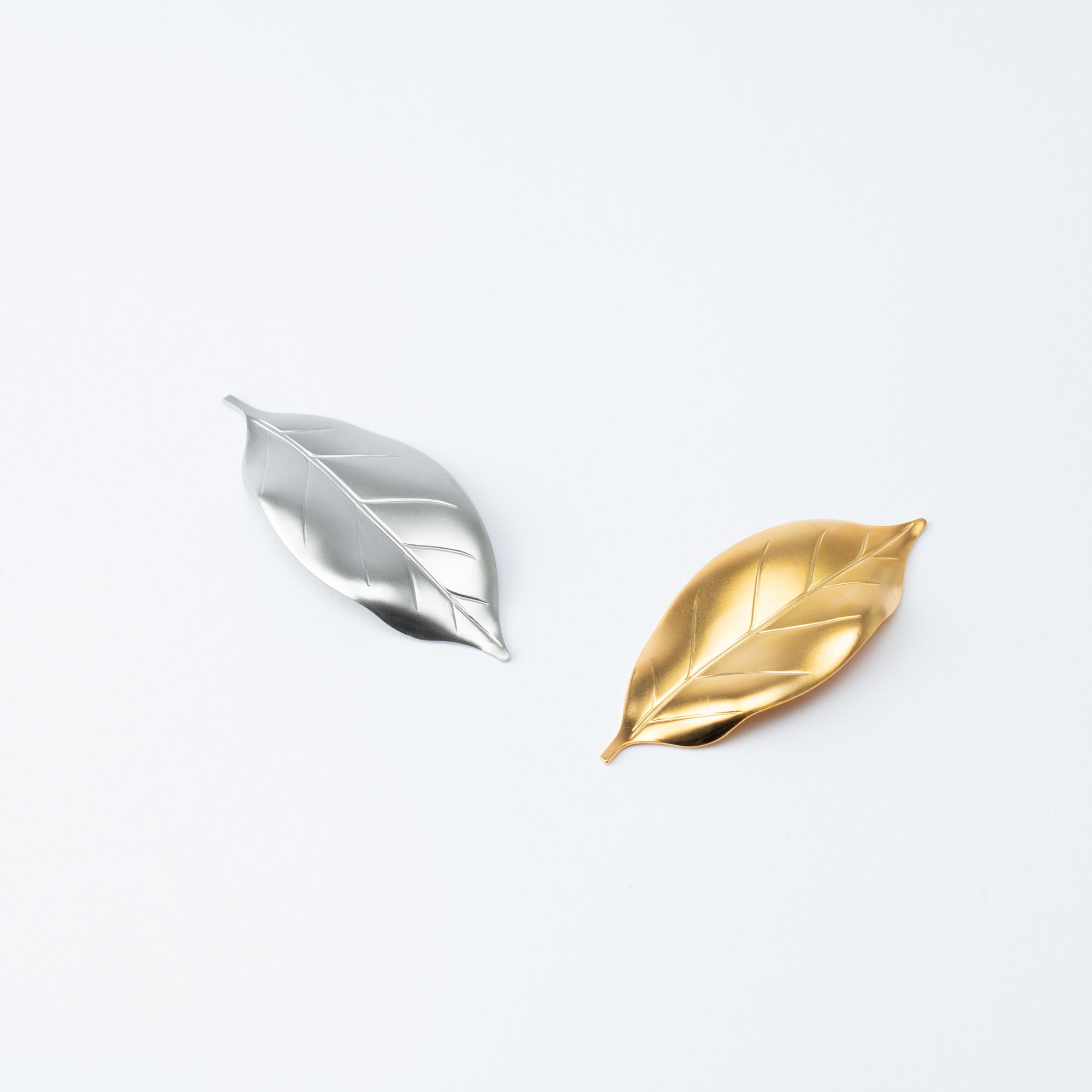
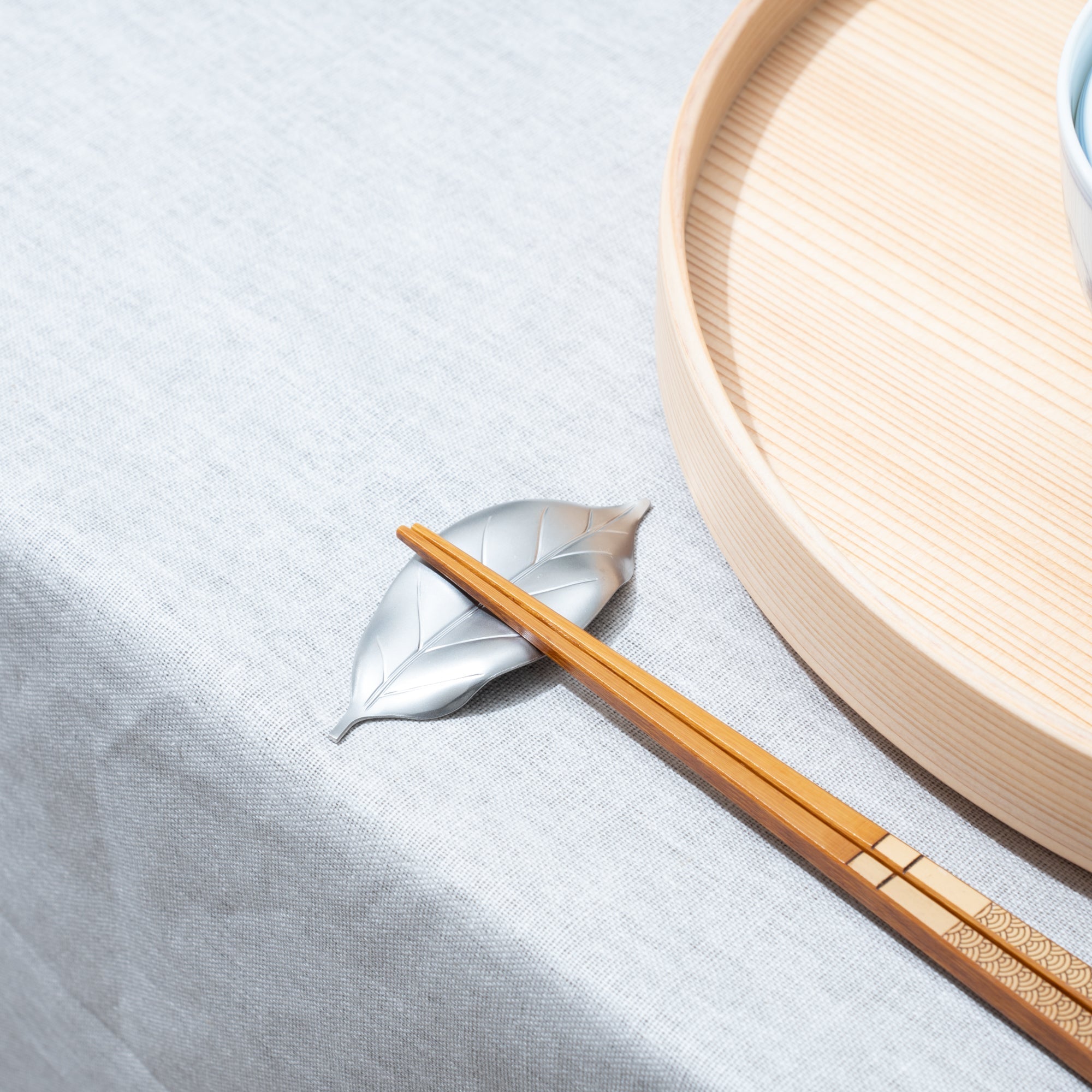
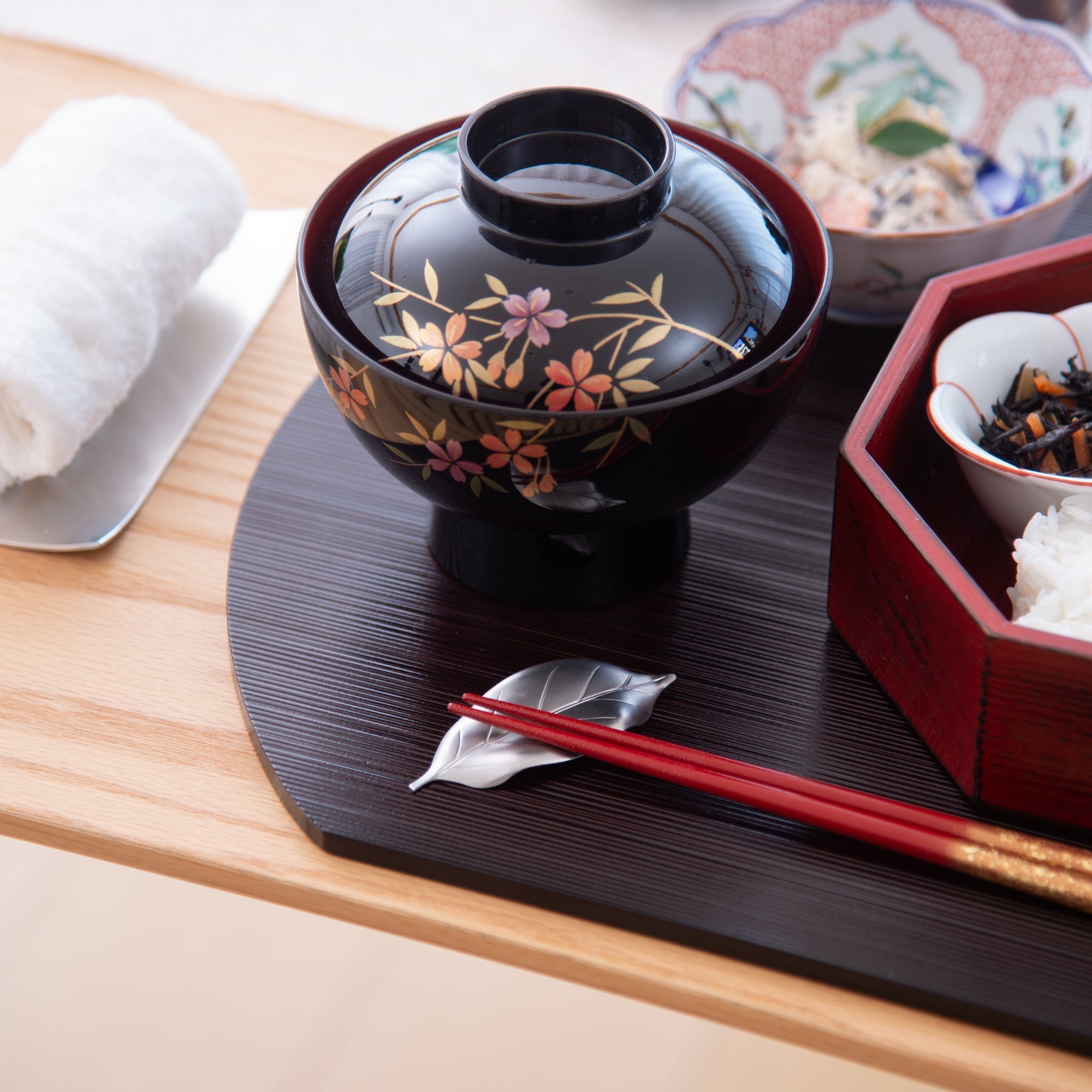
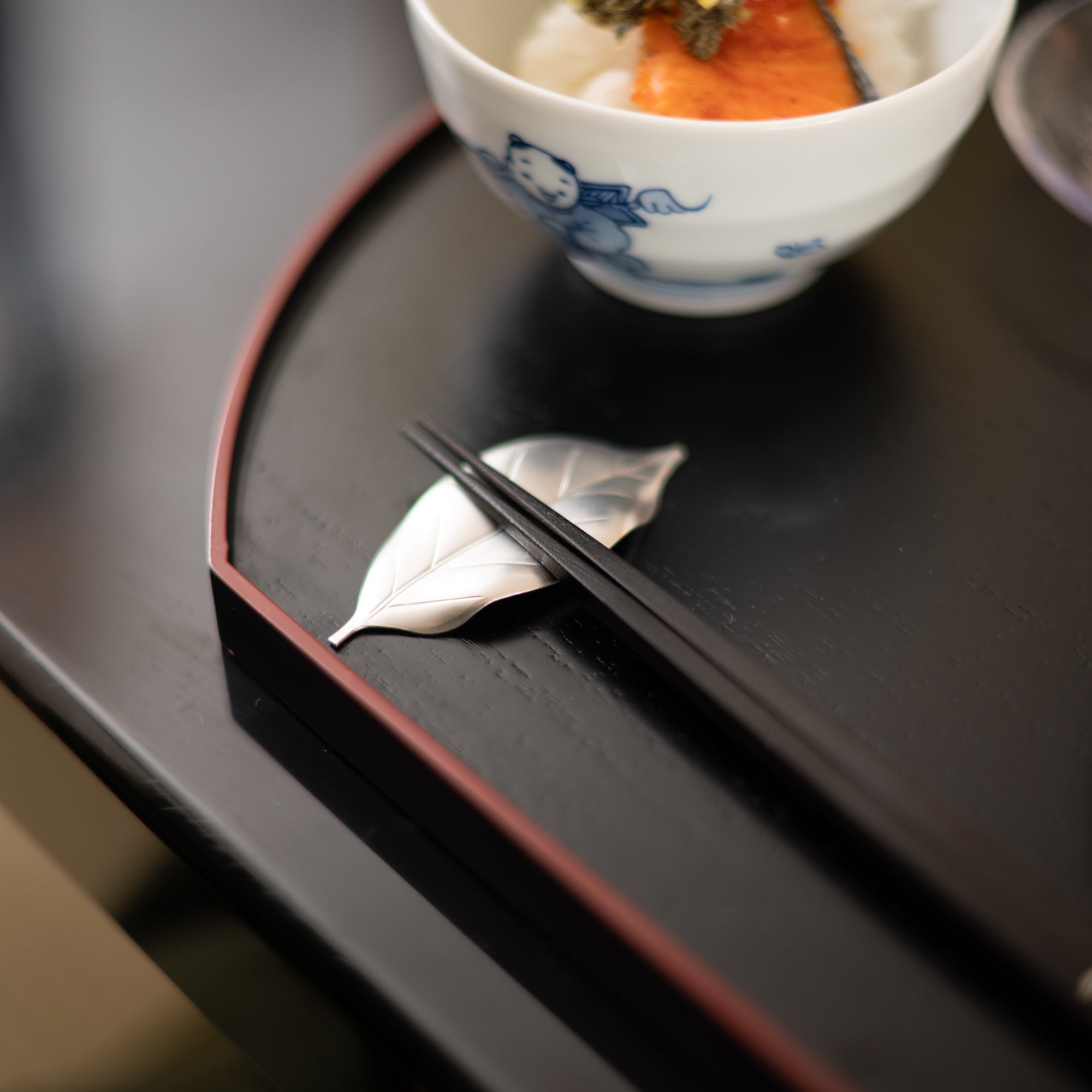
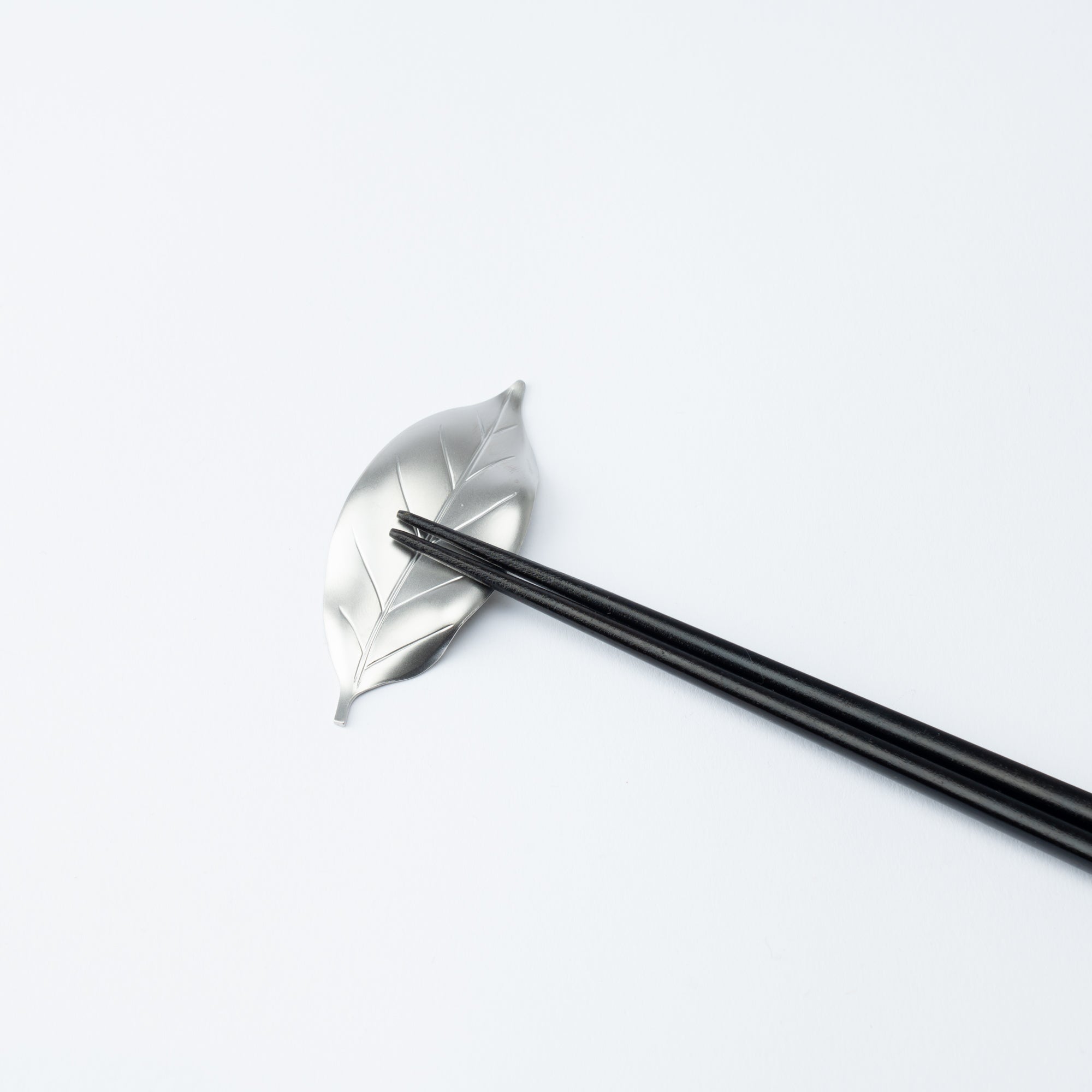
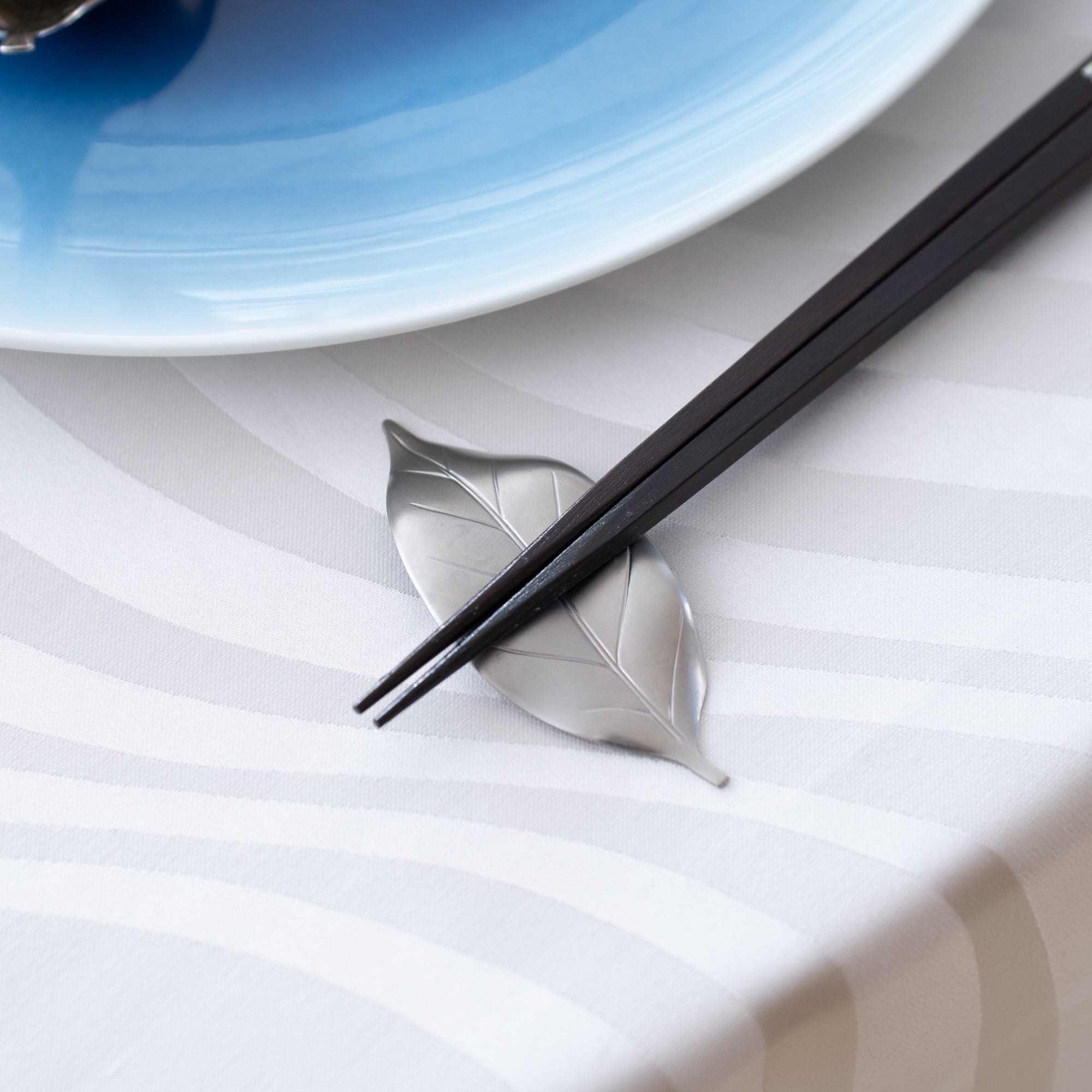
Tsubame Hutlery Silver Camellia Leaf Chopstick Rest
Estimated Shipping Widget will be displayed here!
This is a stainless steel chopstick rest in the shape of a camellia leaf in silver. It is made in Tsubame Sanjo, which accounts for 90 percent of domestic production of metal tableware.
It expresses the thickness, undulation, and curves of a camellia leaf, and is designed by Kaichiro Yamada, KAICHI DESIGN, which has won awards in Japan and abroad.
Camellia leaves do not wither even in winter, and are characterized by being lush, glossy and thick. Camellia is translated as "Tsubaki" in Japanese, which may mean "tree with strong leaves" or "tree with glossy leaves".
The surface is processed to have a slightly rough feel, making it less shiny and more matte and calm.
It is a perfect item for everyday use, for entertaining guests, and as a gift for loved ones.
PRODUCT DETAIL
- Quantity: 1 piece
- Dimension: 7.5cm(3in) x 3.2cm(1.3in)
- Material: Stainless steel
- Origin: Made in Japan - Tsubame Sanjo Metalwork
- Brand: Tsubame Shinko
Choose options
















